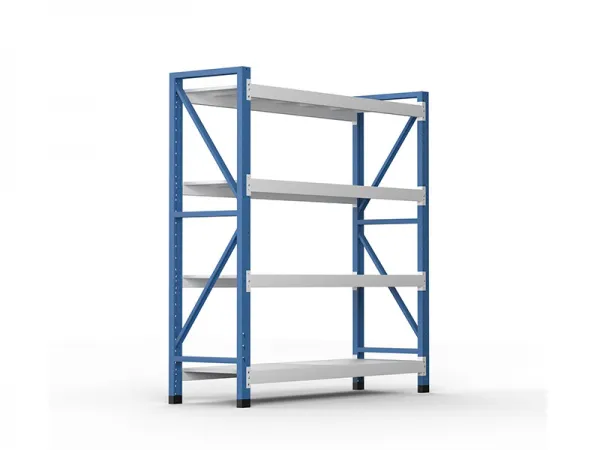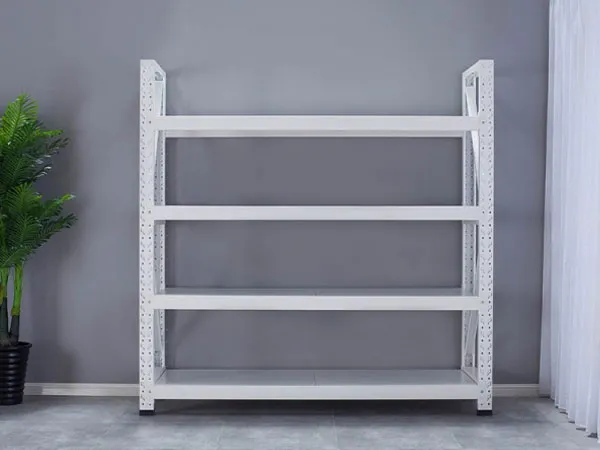Industrial racking systems, also known as warehouse racking systems or storage racking systems, are specialized structures designed to store goods in industrial facilities, distribution centers, and warehouses. These systems maximize storage space, facilitate efficient inventory management, and enhance overall operational productivity. Industrial racking systems are crucial in industries where large quantities of goods need to be stored, organized, and accessed systematically.
Key Components of Industrial Racking Systems
-
Uprights: Vertical columns or frames that provide support for the racking system. Uprights are connected by horizontal and diagonal braces to enhance stability.
-
Beams: Horizontal bars that connect the uprights, forming the shelves or levels where goods are stored. Beams can often be adjusted to accommodate different load heights.
-
Decking: The surface upon which goods are placed. Decking can be made of various materials, such as plywood, wire mesh, or steel panels. It provides additional support and stability for stored items.
-
Bracing: Diagonal and horizontal braces between uprights that reinforce the structure, ensuring stability and preventing swaying.
-
Load Beams: Beams that support the weight of stored goods. The number and placement of load beams determine the weight capacity of each shelf level.
-
Pallets: Goods are typically stored on pallets, which are placed on the racking system. Pallets can be accessed using forklifts or other material handling equipment.
The benefits of using industrial racking systems

-
Maximizes Storage Space: Racking systems utilize vertical space efficiently, allowing businesses to store a larger volume of goods within the same square footage. This is especially important in warehouses and distribution centers where space is at a premium.
-
Improved Organization: Racking systems facilitate systematic organization of goods. With designated shelves and compartments, it's easier to categorize products, making inventory management more efficient. This organized structure helps in locating items quickly and reduces the chances of misplacement.
-
Enhanced Accessibility: Different types of racking systems allow for easy access to stored items. Whether using selective racks for direct access or pallet flow racks for automatic stock rotation (FIFO), these systems ensure that products are readily accessible for picking and restocking.
-
Increased Productivity: By reducing the time taken to locate and retrieve items, racking systems significantly enhance overall productivity. Employees can focus on tasks such as picking, packing, and shipping rather than wasting time searching for products.
-
Customization: Industrial racking systems come in various configurations and sizes, allowing businesses to customize the storage solutions according to their specific needs. Whether storing pallets, long items, or bulk goods, there is a racking system suitable for every requirement.
-
Cost-Effective: Investing in racking systems is a cost-effective solution for optimizing storage space. Compared to expanding a warehouse or investing in additional storage facilities, racking systems offer a more economical way to increase storage capacity.
-
Safety: Racking systems are designed with safety features such as load-bearing capacities, proper spacing, and secure anchoring. This ensures that stored items are secure and stable, minimizing the risk of accidents and injuries in the workplace.
-
Inventory Control: Racking systems facilitate better inventory control by providing a clear view of available stock. This transparency enables businesses to maintain optimal stock levels, reduce excess inventory, and plan for restocking in a timely manner.
-
Easy Assembly and Reconfiguration: Modern racking systems are designed for easy assembly and disassembly. This feature allows for quick reconfiguration of the storage space to accommodate changing inventory needs without disrupting regular operations.
-
Sustainability: Efficient use of space through industrial racking systems contributes to sustainability efforts. Maximizing storage within existing facilities reduces the need for new construction, conserving resources and reducing the environmental impact.
In summary, industrial racking systems offer a range of advantages that contribute to efficient, organized, and productive warehouse operations. Their ability to maximize space, enhance accessibility, and improve overall workflow makes them indispensable in various industries dealing with storage and logistics challenges.

